Passengers 300 Fatalities 3 Number of deaths 3 Passenger count 300 | Crew 15 Date 22 August 1999 Survivor 312 | |
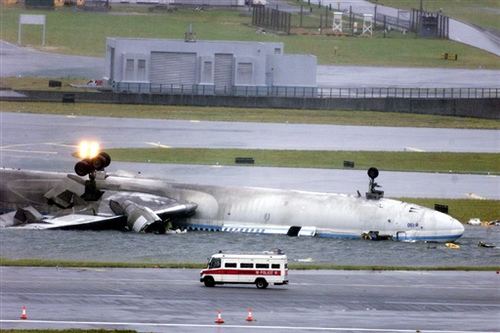 | ||
Injuries (non-fatal) 208 (44 serious, 164 minor) Destination Taiwan Taoyuan International Airport Similar China Airlines Flight 605, China Airlines Flight 140, China Airlines Flight 334, China Airlines Flight 676, China Airlines Flight 006 | ||
Aviation disasters china airlines flight 642
China Airlines Flight 642 was a flight that crashed at Hong Kong International Airport on 22 August 1999. It was operating from Bangkok (Bangkok International Airport, now renamed Don Mueang International Airport) to Taipei with a stopover in Hong Kong.
Contents
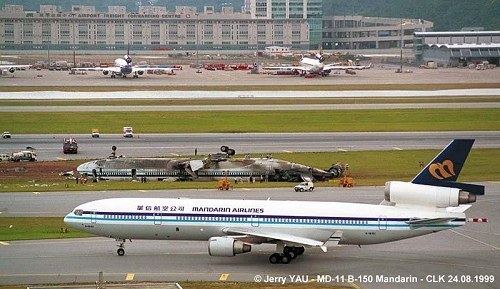
The plane, a McDonnell Douglas MD-11 (registration B-150), was operated by subsidiary Mandarin Airlines on behalf of China Airlines. While landing during a typhoon, it touched down hard, flipped over and caught fire. Of the 315 people on board, 312 survived and three were killed.
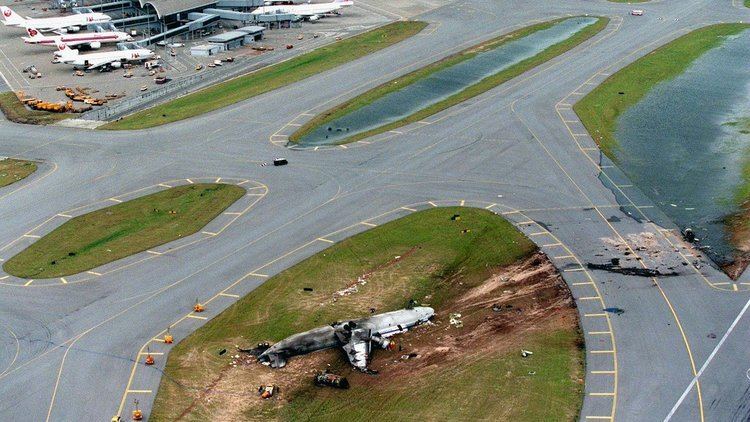
The route continues to operate today with the flight no longer originating in Bangkok and is strictly a Hong Kong-Taipei route. Bangkok-Hong Kong service ended on 31 October 2010. The route is now flown by a Boeing 747-400 and Airbus A330-300.
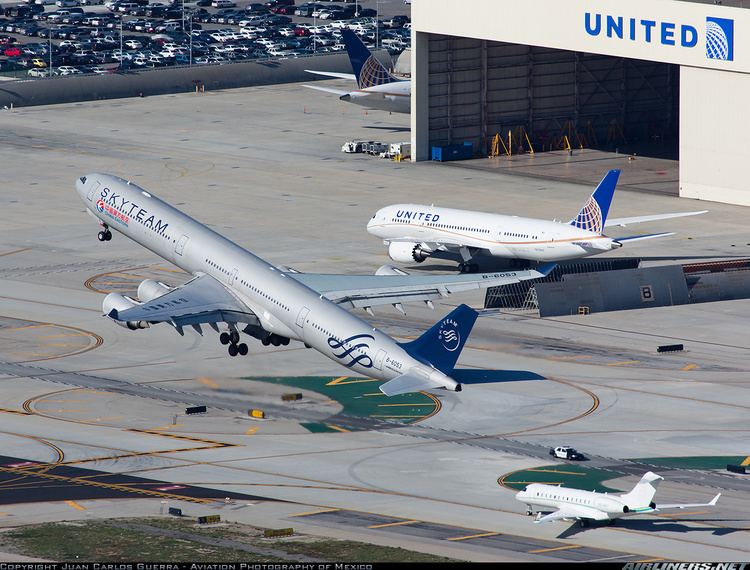
Flight 642 was one of only two hull losses of MD-11s with passenger configuration, the other being Swissair Flight 111, which crashed in 1998 with 229 fatalities. All other hull losses of MD-11s have been when the aircraft has been serving as a cargo aircraft.
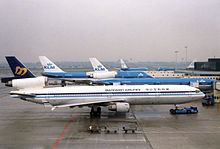
Summary
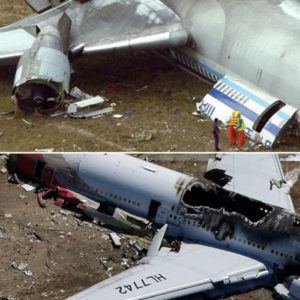
At about 6:43 P.M. local time (1043 UTC) on 22 August 1999, the MD-11 was making its final approach to runway 25L when Typhoon Sam was 50 km NE of the airport. At an altitude of 700 feet prior to touchdown a further wind check was passed to the crew: 320 deg/28 knots gusting to 36 knots. This results in a crosswind component of 21.4 knots gusting to 27.5 knots, while the tested limit for the aircraft was 35 knots.
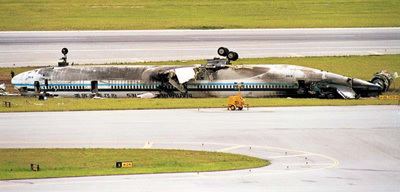
During the final flare to land, the plane rolled to the right, landed hard on its right main gear and the No. 3 engine touched the runway. The right wing separated from the fuselage. The aircraft continued to roll over and skidded off the runway in flames. When it stopped, it was on its back and the rear of the plane was on fire, coming to rest on a grass area next to the runway, 1,100 m from the runway threshold. The right wing was found on a taxiway 90 meters from the nose of the plane. As shown in photos of the aircraft at rest, the fire caused significant damage to the rear section of the aircraft but was quickly extinguished due to the heavy rain and quick response from rescue teams in the airport.
Three of the 300 passengers died; all 15 crew members survived.
Investigation
The final report of the accident blamed it mainly on pilot error; specifically the inability to arrest the high rate of descent existing at 50 ft altitude on the radar altimeter. The descent rate at touch down was 18–20 ft/s.
The flight data stored in the volatile memory of the aircraft's Quick Access Recorder (QAR) during the last 500 ft of the approach could not be recovered due to the interruption of the power supply at impact. Probable wind variations and the loss of headwind component, together with the early retardation of thrust levers, led to a 20 kt loss in indicated airspeed just prior to touchdown.
Due to the severe weather conditions forecast for Hong Kong, the flight crew had prepared to divert the flight to Taipei if the situation at Hong Kong was deemed unsuitable for landing. Extra fuel was carried for this possibility, resulting in a landing weight of 429,557 lbs, which is 443 lbs below its maximum landing weight of 430,000 lbs. Based on the initial weather and wind check which was passed to the crew from Hong Kong during the flight, they believed they could land there and decided against a diversion to Taipei. However four earlier flights had carried out missed approaches at Hong Kong and five had diverted.
During the final approach, the plane descended along the ILS glideslope until at about 700 ft, the crew visually acquired the runway. They disengaged the autopilot but left the autothrottle on. During the flare, the rate of descent was not arrested, the plane landed with the right wing slightly lower. The right landing gear touched down first, the right engine impacted the runway and the right wing was detached from the fuselage. Since the left wing was still attached, the lift from that wing rolled the fuselage onto its right side, and the plane came to rest inverted in the grass strip next to the runway. The spilled fuel caught fire.
Several suggestions were given to China Airlines concerning its training.
Media
The landing and crash of Flight 642 was recorded by nearby occupants in a car. The video which also captured reactions from the witnesses has been uploaded to websites such as YouTube and Airdisaster.com.
A photo showing another Mandarin Airlines MD-11 taxiing past the remains of Flight 642 was circulated.
This disaster was also aired on RTHK's Elite Brigade II Episode 2 in 2012.
